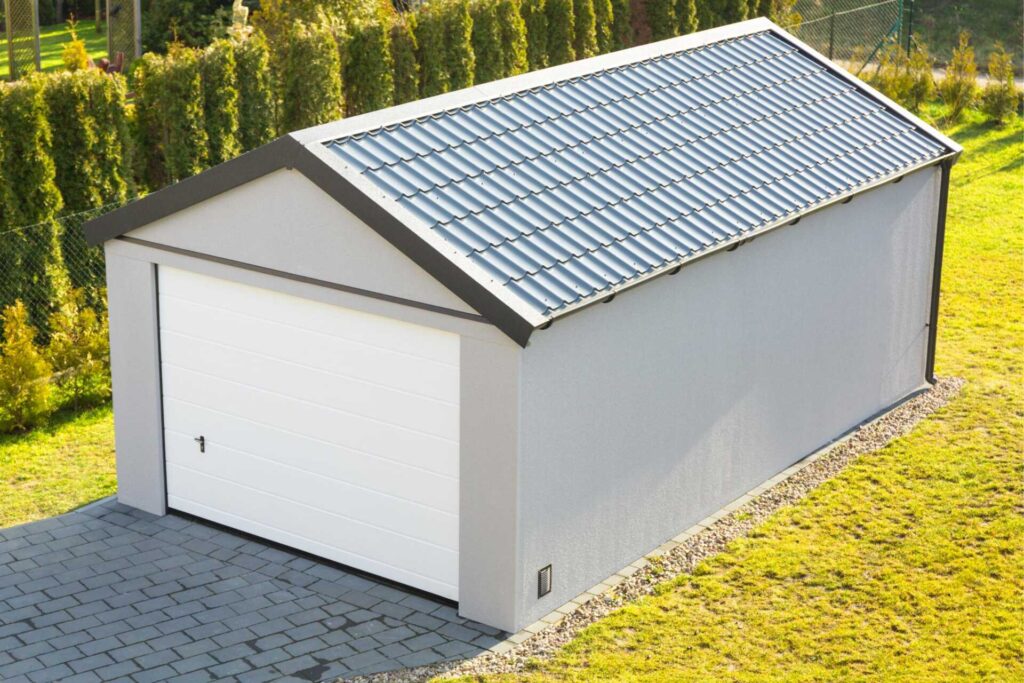
Contents
When constructing steel structures to support heavy machinery, precision is key. Each element, from the materials chosen to the welding techniques employed, plays a critical role in ensuring the structure’s integrity and longevity. By understanding the intricacies of load distribution and material strength, you can lay a solid foundation for a successful project. Stay tuned to discover how creative design solutions and strategic planning can elevate your steel structure’s capabilities in supporting heavy machinery, setting the stage for best performance in demanding industrial environments.
Key Takeaways
- High-strength steel is used for durability and load-bearing capacity.
- Incorporate uniform load distribution in the design.
- Opt for corrosion-resistant materials to enhance longevity.
- Ensure structural stability for heavy machinery operations.
- Implement stress-relief treatments for enhanced performance.
Key Considerations for Steel Structures
When designing steel structures, it’s important to carefully consider factors such as load-bearing capacity, material durability, and structural stability. Enhancing the design to minimize material usage while meeting safety standards is essential to ensure cost efficiency. Thorough structural analyses and simulations can determine the most efficient configurations that balance cost and safety.
In addition to cost efficiency and safety standards, environmental impact is a vital consideration in steel structure design. Opting for eco-friendly materials and construction practices can lessen the carbon footprint of the project. Utilizing recycled steel and incorporating energy-saving design elements can help reduce the environmental impact of the structure.
Moreover, when planning a steel structure project, the project timeline plays a significant role in its success. Efficient project management and coordination of tasks are important to guarantee timely completion. Delays can result in increased costs and interruptions to the overall project schedule. By establishing clear timelines and milestones, you can effectively manage the construction process and meet project deadlines.
Structural Design for Heavy Machinery
Consider optimizing the structural design of heavy machinery to ensure efficient performance and longevity under heavy loads and operational conditions.
When designing structures to support heavy machinery, implementing key principles can enhance functionality and durability.
Load distribution: Ensure the structural design allows for the uniform distribution of weight and stress throughout the machinery. This promotes stability and reduces the risk of structural failure due to uneven loading.
Design flexibility: Incorporate a design that allows for modifications and adjustments to adapt to changing operational requirements. Flexibility in the structural design enables the machinery to accommodate upgrades or modifications without compromising its integrity.
Corrosion resistance, eco-friendly benefits: Choose materials and finishes that provide excellent corrosion resistance to protect the structure from environmental factors. Opting for sustainable materials enhances the longevity of the machinery and also contributes to environmental conservation efforts.
Importance of Material Selection
When constructing steel structures, selecting the right materials is important for ensuring the best strength and durability.
The choice of materials directly impacts the overall performance and longevity of the structure.
Considering factors such as material strength, durability, and their effects on performance is essential in achieving a sturdy steel structure.
Material Strength Importance
Choosing the right material with the best strength characteristics is essential when constructing steel structures to maintain structural integrity and safety. Steel properties and manufacturing processes play a crucial role in determining the strength of the material used.
Understanding the load capacity and implementing appropriate safety precautions are vital factors to take into account when selecting materials for heavy machinery structures.
Steel Properties: Take into account the specific properties of the steel, such as tensile strength, yield strength, and ductility, to guarantee it can withstand the expected loads and stresses.
Manufacturing Processes: Opt for materials that have undergone quality manufacturing processes to ensure uniformity and consistency in the steel’s strength and durability.
Load Capacity and Safety Precautions: Evaluate the maximum load the structure will bear and incorporate safety measures to prevent overloading, as well as maintain the overall safety of the machinery and personnel.
Structural Durability Considerations
To assure the structural durability of steel constructions, the selection of materials with the best properties and manufacturing standards is vital. Proper material selection plays a significant role in guaranteeing the longevity and performance of heavy machinery structures.
When choosing materials, factors such as corrosion prevention and reinforcement techniques must be carefully considered. Corrosion can weaken steel structures over time, leading to potential safety hazards and structural failures. Incorporating effective corrosion prevention measures can extend the lifespan of the steel components and enhance overall structural integrity.
Additionally, reinforcement techniques are essential for improving load distribution and enhancing foundation stability. By strategically reinforcing key areas within the structure, you can ensure that the heavy machinery can withstand heavy loads and external forces without compromising its durability.
Proper load distribution helps prevent stress concentrations in specific areas, reducing the risk of structural damage and guaranteeing the longevity of the steel construction. Foundation stability is also vital for maintaining the overall integrity of the structure and ensuring the safe operation of heavy machinery.
Impact on Performance
Proper material selection greatly impacts the performance of steel structures in heavy machinery applications. When choosing the right materials for your steel structures, consider the following key factors:
Performance Efficiency: The material used in constructing heavy machinery directly influences its efficiency. Opting for high-quality steel with the right properties enhances the overall performance of the machinery, ensuring smooth operations and increased productivity.
Machine Stability: Material selection plays a pivotal role in determining the stability of heavy machinery. Choosing materials that offer adequate strength and durability helps maintain the stability of the machine during operation, reducing the risk of accidents and ensuring a safer working environment.
Load Capacity and Structural Integrity: Selecting materials with the appropriate load-bearing capacity is essential for ensuring the structural integrity of steel structures in heavy machinery. The right material choice can prevent structural failures, prolong the machinery’s lifespan, and enhance its performance under varying load conditions.
Welding Techniques for Strength
To ensure the strength of your steel structures, focus on achieving proper weld penetration. Adequate weld penetration guarantees a strong bond between the materials. Using quality filler materials is also crucial, as they enhance the overall structural integrity.
Implementing stress-relief treatments is equally important. These treatments help to minimize internal stresses, further enhancing the strength and durability of the welded joints.
Proper Weld Penetration
Achieving proper weld penetration is essential for ensuring the strength and integrity of steel structures during the welding process. Welding challenges can arise when attempting to achieve the necessary penetration depth.
To overcome these challenges, consider the following:
Optimal Parameters: Adjust welding parameters such as current, voltage, and travel speed to achieve the desired penetration depth without compromising the structural integrity.
Joint Preparation: Properly prepare the joint by ensuring it’s clean, free of debris, and accurately fit to promote better weld penetration.
Technique Mastery: Practice different welding techniques, such as weaving or stringer beads, to gain control over the weld pool and achieve consistent and thorough penetration throughout the joint.
Quality Filler Materials
For maintaining the strength and integrity of steel structures, selecting quality filler materials and employing effective welding techniques is essential. When selecting filler materials, take into account their properties and welding compatibility to guarantee a strong bond.
Filler materials should align with the base metal in strength and corrosion resistance to preserve structural integrity. Additionally, compatibility with the welding process is vital for achieving a high-quality weld.
Cost efficiency and environmental impact are also significant factors to take into account when choosing filler materials. Opt for materials that offer the necessary strength while being cost-effective. Furthermore, select filler materials that have minimal environmental impact during production and use.
This not only benefits the environment but also aligns with sustainable practices in construction.
Stress-Relief Treatments
Consider incorporating stress-reducing techniques as part of your welding methods to enhance the strength of steel structures. When welding heavy machinery, the heat-affected zones can experience residual stresses that may compromise the mechanical properties of the steel. By applying stress-reducing treatments, you can maximize the structure’s durability and performance.
Here are key points to remember:
Heat Treatment: Utilize controlled heating and cooling processes to reduce residual stresses within the welded components. This heat treatment can minimize distortion and improve the overall integrity of the steel structure.
Mechanical Properties: Conduct thorough testing to assess the mechanical properties of the welded joints after stress-reducing treatments. This evaluation ensures that the steel maintains its intended strength and toughness, meeting the requirements for heavy machinery applications.
Expert Guidance: Seek advice from experienced welding professionals to determine the most suitable stress-reducing treatments for your specific steel structure. Their expertise can help you achieve optimal results in enhancing the strength and longevity of your welded components.
Maintenance Tips for Longevity
Regular examination and timely repairs are vital for safeguarding the durability of steel structures. To uphold the structural strength and efficiency of heavy machinery, it’s essential to implement appropriate maintenance practices. Begin by applying top-notch surface coatings to shield the steel from corrosion. These coatings serve as a barrier, averting moisture and corrosive substances from directly contacting the steel, thereby decreasing the risk of rust and deterioration.
Establish regular inspections and maintenance schedules to detect any indications of wear or damage at an early stage. Inspections should involve examining for any fractures, indentations, or areas where the coating may be compromised. It’s crucial to address any issues promptly to prevent additional damage and preserve the structural integrity of the steel components.
Alongside regular inspections, periodic maintenance tasks such as washing, lubricating moving parts, and securing bolts and connections are indispensable for the longevity of steel structures. Proper maintenance prolongs the lifespan of the machinery and ensures secure operation.
Case Studies in Industrial Applications
Implementing steel structures in demanding industrial settings demonstrates their durability and efficiency in real-world applications. Steel is preferred for heavy machinery due to its strength and resilience, making it ideal for withstanding harsh conditions.
Let’s explore some case studies that highlight the successful application of steel structures in industrial settings.
Corrosion Prevention and Maintenance Strategies
Employing regular inspections and protective coatings can greatly reduce the risk of corrosion in steel structures. Implementing cathodic protection systems can further improve the longevity of steel components in corrosive environments. Utilizing proper drainage systems and ventilation can help control moisture buildup, a common cause of corrosion in industrial facilities.
Load Distribution and Structural Analysis Techniques
Conducting detailed structural analysis using finite element methods can enhance the design of steel structures for heavy machinery. Implementing load distribution mechanisms such as trusses and beams ensures that weight is evenly spread, preventing the overloading of specific components. Using advanced modeling software can simulate various load scenarios, allowing for precise adjustments to improve structural integrity.
Review
As you gaze upon the towering steel structures, envision the precision and strength that went into their construction. Each weld, each material choice, and each design consideration were carefully crafted to support heavy machinery and withstand the test of time.
The smooth blend of engineering expertise and practical application creates a symbol of durability and reliability in the industrial landscape. Embrace the power of steel, for it’s the backbone of progress and innovation.
Recent Posts
What Are the Benefits of Tailored Metal Structures?
Imagine a well-crafted suit tailored to fit perfectly; that’s how tailored metal structures operate in
3 Tips for Long-lasting Metal Commercial Structures
When it comes to metal commercial structures, you’ll want to focus on a few key
Explore Benefits of Residential Metal Structures
It’s funny how you might stumble upon the idea of residential metal structures just when




